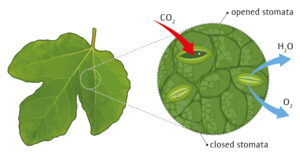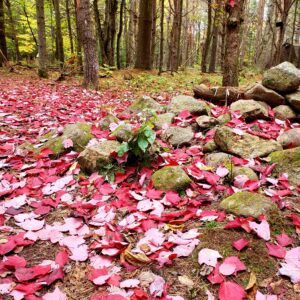Millions of people visit the Adirondack Mountains in Upstate New York each year. In our opinion, there is no better time to go than in the fall when the leaves change color!
Why Do Leaves Change Color In The Fall?
Leaves start to change color in the fall because the days get shorter and the temperature begins to decrease. When this happens, the leaves of many deciduous trees stop making food in preparation for winter. When the leaves stop making food, they change color.
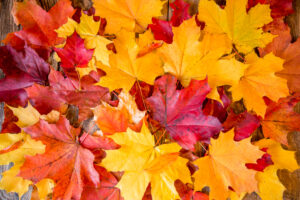
What Makes Leaves Change Color In The Fall?
Chlorophyll is responsible for giving plants their green color. It absorbs light energy and uses it to make food. During the summer months, the plant produces more chlorophyll than it needs. However, once temperatures drop, the plant starts to use up its supply of chlorophyll. At this point, the leaves will start to turn color.
Why Are Leaves Green?
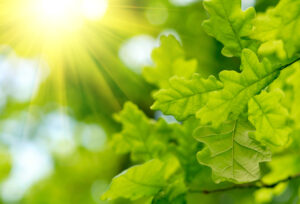
In the spring and summer, the leaves on most trees are green. This is because the leaves are busy making food that the trees need to sustain themselves. A green pigment in the plant’s leaves called chlorophyll is essential in this process. To make food, plants use the light energy from the sun. This light energy enables plants to go through the process of photosynthesis. Photo means “light,” and synthesis means “put together.” Plants use light to put things together. Plants breathe in carbon dioxide from the air through little holes in their leaves called stomata. Plants also absorb water and minerals. During photosynthesis, plants use the energy from the sun to put these things together. Together, these things make oxygen and sugar, also known as glucose. Glucose is food for the plant.
What Is Chlorophyll?
Chlorophyll is a green pigment. Chlorophyll is found in a plant’s chloroplasts, which are tiny structures in a plant’s cells. Chlorophyll’s function is to absorb light. Chlorophyll is replaced in leaves all summer. However, chlorophyll is not replaced as the trees prepare for winter.
How Does Temperature Affect Trees?
As days get shorter and temperatures drop, chlorophyll levels decrease. There are other pigments in the leaves all the time. In the spring and summer, there is so much chlorophyll that it hides the other pigments. When chlorophyll breaks down, the different colors show through.
Xanthophyll is a yellow pigment. It is the color found in corn, pumpkins, and squash.
Carotenoids are orange pigments, like those found in carrots.
Anthocyanins are reddish-purple pigments. Besides being in leaves, these pigments are found in cherries, blueberries, eggplant, and more.
When these pigments mix, a range of colors is created. That’s why leaves can be orangish-yellow, reddish-purple, gold, and brown. Think of it as mixing paints.
To get the most vibrant colors, you don’t want temperatures that are too hot or too cold. Temperatures that are low but not freezing create more anthocyanins meaning more bright red leaves.
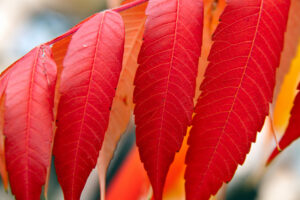
How Does Precipitation Affect the Amount of Color in Leaves?
While temperature plays the most significant role in creating vibrantly colored leaves, so does the amount of rain. If there is too much, there isn’t enough sunlight. Thus, the leaves won’t be as bright. If there isn’t enough rain, the leaves will die and fall to the ground faster.
Why Do Leaves Fall From Trees?
Leaves fall off trees so that they can survive the winter. The leaves don’t actually fall off! Every year in autumn, the shorter days and cooler temperatures trigger a hormone to end a chemical message within the tree to create abscission cells. These cells are likes scissors and cut the leaves from the branches.
The leaves that are under the trees provide additional nutrients to the soil. This enables trees to conserve what little water and energy they have over the winter. It also prevents leaves from becoming too heavy with snow, potentially causing the tree to crash to the ground.
Conclusion: Why Do Leaves Change Color In The Fall?
So leaves change colors in autumn for several reasons. The biggest reason is the lack of chlorophyll in the leaves, letting the other pigments show through. Other reasons are the change in temperature, shorter days, and the amount of precipitation.
Fall Foilage Fun in the Classroom
Here is a video that shows a fun little experiment you can do with your students so that they can see the pigments in the leaves. Students rip up leaves and put them in a jar, add rubbing alcohol, blend the leaves and alcohol with a blender, drape strips of paper towel over the rim of the jar into the mixture, let the liquid climb up the paper, remove the paper, and let it dry. Different pigments will settle in different areas of the towel.
So, why don’t you explore some peak foliage this fall? You might see the leaves of sugar maples, the brilliant reds and purples of dogwoods and sumacs, and the yellows and browns of oak trees!
If you are visiting the Adirondack Mountains, you might want to see Chimney Bluff State Park or Green Lakes State Park.



